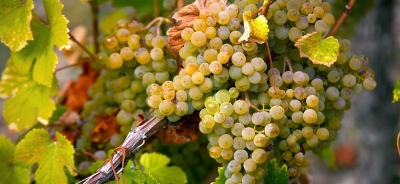
- Authors: Spain
- Appointment: dining room
- Berry color: yellow-green
- Ripening period: late
- Flower type: bisexual
- Berry shape: rounded
- The power of growth: vigorous
- Berry size: medium
Verdejo is a grape variety used to make white wine. The variety is grown mainly in Spain, and therefore it is difficult to talk about the possibility of cultivation in Russian regions. However, knowing all the features of the presented variety, experienced gardeners can try themselves in growing Verdejo grapes.
Breeding history
There is no unambiguous version of the origin of this grape. The main story is about the emergence of the variety in North Africa. From here it was transported through the Mozarabs who settled the banks of the Duero River to Spain, the Rueda region. It is here that the culture is still cultivated on an industrial scale. Moreover, Verdejo is considered by the Spaniards to be their favorite white wine.
Description
The vine is characterized by vigor and great vigor of growth. The leaves are medium, five-lobed, sometimes three-lobed; hairiness is almost absent on the underside of the leaf plate.
Ripening period
Verdejo is a late ripening variety.
Bunches
The bunches can be medium or small in size and have a very short stem.
Berries
The fruits are medium in size, the shape of the berries is round, the skin is yellow-green in color, the pulp is dense and juicy.
Taste
The palate is pleasant, with herbaceous and fruity notes on the palate with a slight sweetness, and some consumers pick up on the nutmeg and fennel notes. The aroma is truly grape, this fragrance is transmitted to the wine. Also in the drink you can feel a pleasant noble bitterness, accompanied by fruit flavors.
Yield
The productivity of the variety directly depends on the growing conditions, but on average, the variety is low-yielding. The fact is that Rueda cannot boast of fertile lands, so the Verdejo variety is used to growing on stony and clayey soils with a low moisture and nutrient content, therefore, the yield is small. It is worth considering that the maximum possible yield can be obtained only when the vineyard reaches 5 years of age.


Growing features
The Spaniards do not keep the peculiarities of caring for grapes a secret. Moreover, the care is quite classic, and includes balanced fertilizing on time, drip irrigation, and annual pruning.
Particular attention is paid to harvesting. The bunches are removed in September at night at a temperature of 10-13 degrees, so that the sun does not burn the fruits. If the thermometer, on the contrary, shows a lower temperature, then the future wine may have a low acidity and acquire a darker shade.
Landing
The region where the presented variety is grown has a dry continental climate and poor soils. Rueda is located mainly on the plain, but at an altitude of 700 m above sea level. In such conditions, the Verdejo variety is planted.The berries are full of aroma and high acidity due to the large difference between day and night temperatures. When planting a variety in another area, it is worth considering the conditions familiar to grapes.

Pollination
Verdejo has bisexual flowers, and therefore does not need extraneous pollinating varieties.
Pruning
Pruning is required in the spring and fall. In springtime, branches damaged during winter should be removed. In the fall, you should also leave only strong shoots that can survive the harsh time.



Frost resistance and the need for shelter
The temperature in the zone where the presented variety is grown ranges from 10 degrees at night to 30 degrees above zero during the day, and if it is impossible to speak with accuracy about the frost resistance of this grape, then, at least, it is obvious that the plant calmly tolerates sharp temperature fluctuations.
It can be assumed that winter hardiness is at an average level, since Rueda is characterized by cold, long winters and spring frosts, and this is especially dangerous for young vineyards.

Diseases and pests
The berries of this variety have a thin skin, which is why the plant can be affected by powdery mildew, which is why it is grown in arid places. Serious preventive measures are being taken on the plantations. Grapes from an infected area should never be mixed with healthy grapes. The quality of wine in Spain is strictly controlled.

If a grape is exposed to any disease or insect, this always affects its appearance.
Storage
In the production of wine, the fruit is almost never stored. The berries are crushed on the day of harvest. If a cold chamber was used, the winemaker is obliged to warn about this fact, otherwise the party may be disqualified.
The same applies to the transportation of bunches. Wine is of poor quality if the berries were transported overnight and processed only the next day. If, when manually picking berries, spent more than 5 hours on the road, the use of antioxidants is necessary.











































































